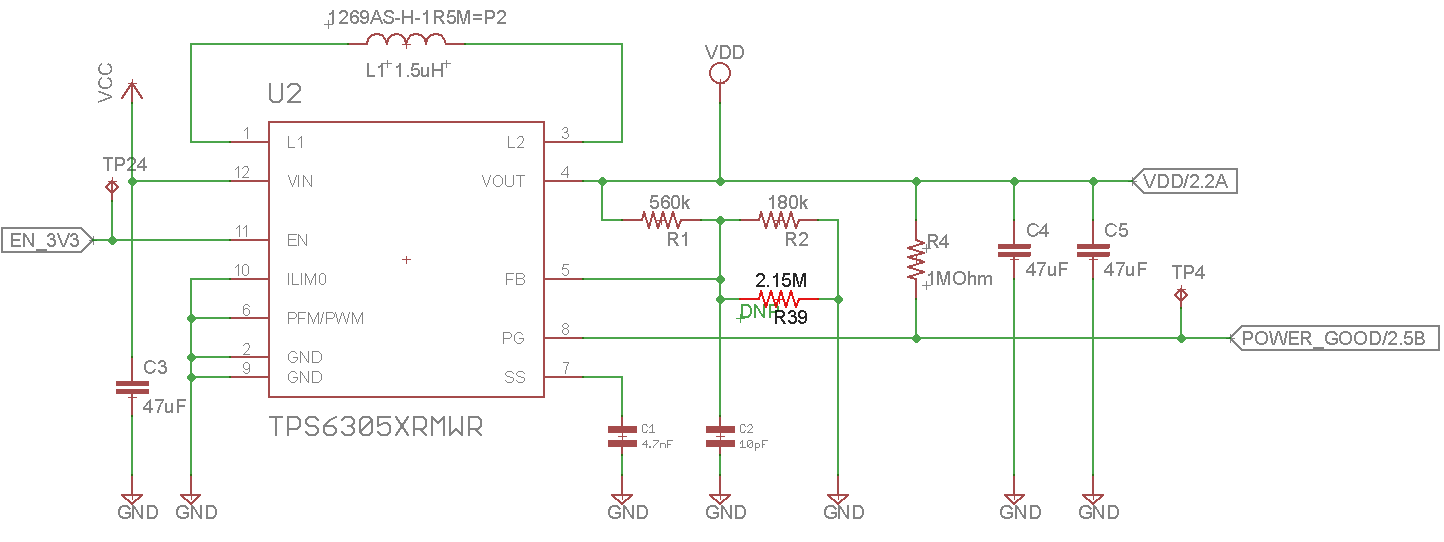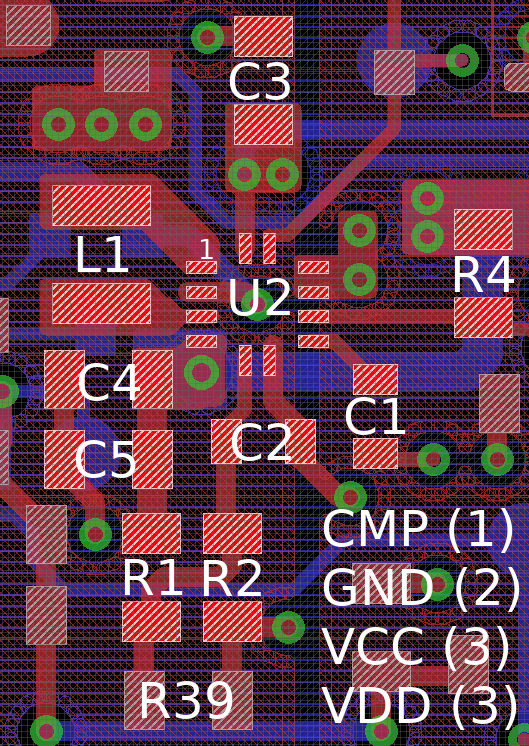Hi, I have a TPS63050RMWR in my design and it seems to do the job. But I've got a couple of boards here in front of me that were working at one point, but not are not working, and I've traced the root cause to an unexpected voltage output from the TPS63050RMWR. I'm using the HotRod package, for what it's worth. The two boards are exhibiting incorrect behavior but in different ways. The first board measures as follows.
VIN = 4.5V
EN = 4.5V
ILM0 = GND
PFM/PWM = GND
SS = 2.32V
L1 = GND (no action)
L2 = GND (no action)
PG = GND
FB = 365mV
VOUT = 1.46V
What would you recommend doing to try and revive this board / chip? The schematic around this part looks as follows:



